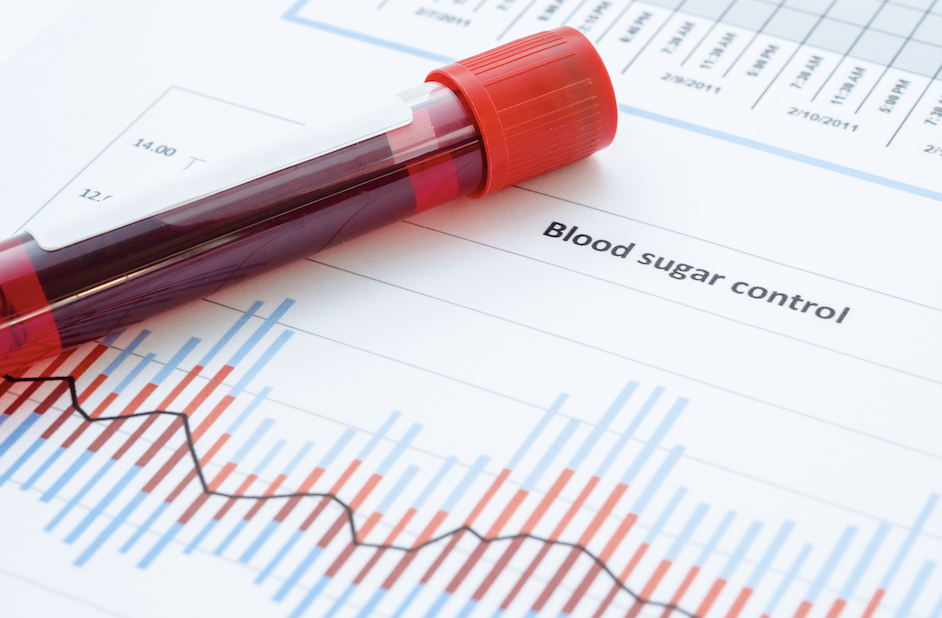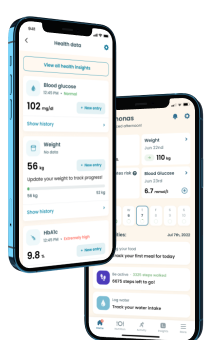How to Lower Blood Sugar Fast?

Do you want to know how to lower blood sugar fast? If you have high blood sugar levels or even higher than normal blood sugar levels, it is a sure sign of diabetes. When you have type 2 diabetes, you have to be on medication to normalize blood sugar levels.
Nutrition has a crucial role in diabetes management. You have to eat foods with a low glycemic index and high fiber content. To better manage your diabetes, you should avoid highly processed foods and sugars of all kinds, including alcohol.
The risk is when you overindulge in carb-rich foods or even drink a lot of alcohol. It can cause your blood sugar levels to increase.
What is hyperglycemia or high blood glucose?
Hyperglycemia or high blood glucose occurs when your body’s blood sugar levels go over the normal limit.
To give you an idea, when your blood sugar level is 126mg/dL (7.0mmol/L) after fasting or 200mg/dL (11.0mmol/L) two hours after the last meal, you have hyperglycemia. The general recommendations from the American Diabetes Association (ADA) are to target a fasting glucose under 130 mg/dL (7.2 mmol/L), and a 1-2 hour postprandial peak under 180 mg/dL (10 mmol/L). It can occur in people with type 1 and type 2 diabetes, in those with pre-diabetes, and in pregnant women with gestational diabetes.
High blood glucose levels occur for many reasons, such as:
- Forgetting to take diabetes medicines or taking a lower dose
- Not taking enough insulin
- Eating too many foods that are high in sugar or carbs
- Drinking a lot of alcohol
- Being ill or having some kind of infection
- Being stressed with work or family issues
- Not exercising
- Over-exercising and putting your insulin and sugar levels out of balance
Hyperglycemia can also come about when there is a combination of two or more factors – you have taken insufficient medicine or insulin, eaten more, are under stress, and stopped exercising. Taken together, these have an exponential effect on sugar levels and can be dangerous as they can cause your sugar levels to shoot up.
The symptoms of hyperglycemia
Before you learn how to lower blood sugar immediately, you should be aware that the symptoms of high blood glucose levels are similar to the ones in the initial stages of diabetes. But even if you know that you have type 1 or type 2 diabetes and are on insulin or medications, you may not experience them till the blood glucose levels are very high.
The symptoms of diabetes include:
- Excessive thirst
- Frequent need to urinate
- Unexplained fatigue and tiredness
- Increased hunger
- Irritability
- Headache
- Blurring of vision
- Smelly and fruity breath and urine
If symptoms persist or increase and you may experience
- Slow wound healing
- Frequent vaginal infections (in women)
- Erectile dysfunction (in men)
- Coldness or insensitivity in the feet, signs of nerve damage
- Digestive disturbances like constipation or diarrhea
Do be alert for these symptoms if you are at risk for developing diabetes.
How to immediately lower blood sugar levels
Two ways to lower blood sugar immediately so that you don’t suffer from severe and long-term effects on your health.
Fast-acting insulin
Fast-acting insulin works very quickly to reduce blood sugar levels. It can be used by both people with type 1 and type 2 diabetes in an emergency. Unlike normal insulin that must be taken 30 to 60 minutes before eating, fast-acting insulin works within 10 to 15 minutes, normalizing blood sugar levels quickly.
Fast-acting insulin works similarly to other insulin types, but it works faster.
Studies have shown contradictions in the timing of taking this fast-acting or rapid-acting insulin, but some studies have shown that it is better to take it before, rather than during or after eating.
Like all kinds of insulin and medicines for diabetes, you also need to balance your carbohydrate intake with insulin and your blood sugar levels. It is always best not to eat foods with a high glycemic index and low fiber content to avoid sugar spikes.



Always consult with your doctor about using any type of medicine.
Light exercise
Another method of lowering blood sugar levels immediately is doing light exercise. This can also bring down your high sugar levels. While all people should incorporate exercise into their daily routine, this is even more crucial for people with diabetes.
It is very simple – exercise uses calories that come from glycogen or sugar reserves. When you want your sugar levels to go down, exercising helps reduce excess sugar in the body.
Exercising enables the muscles to make better use of whatever insulin is available in the body. What’s more, even if insulin is not available in a sufficient quantity, the cells can use the glucose in the body when you exercise.
Yet another advantage of exercise is that the effect is quick. An added benefit is that if you exercise enough and regularly, the body’s insulin sensitivity improves. The blood sugar-lowering effects of physical activity can last up to 24 hours.
What are effective exercises to lower blood sugar levels? If you exercise regularly, you can do almost anything – going to the gym, lifting weights, running or jogging, hiking, swimming, playing tennis or any kind of sport, or whatever you like, as long as you get moving.
If you don’t exercise, you will be surprised to learn that even medium or brisk walking for 30 minutes or an hour will help you reduce your blood sugar levels immediately and on a long term basis. You can also try Tai Chi, Yoga, stationary cycling, swimming, and other forms of exercise.
When you have high blood sugar levels, do not indulge in strenuous exercise suddenly.
When to seek immediate medical attention
A medical emergency can strike at any time in a person with diabetes. You can experience hypoglycemia or hyperglycemia, and you should always be prepared.
People with type 1 diabetes are more at risk of medical emergencies because their bodies do not make insulin and they have to take it in an injectable form. However, type 2 diabetics can also suffer from hyperglycemia, when they don’t take sufficient medicine or eat too much of the wrong foods. High sugar levels may even occur when people don’t know that they have diabetes.
You can suffer from diabetic ketoacidosis (DKA) which can even cause coma in diabetic patients. This happens when insulin in the body falls to low levels or you have not eaten enough to use the insulin or you have drunk too much alcohol. Ketones in the urine that can be easily detected are a sign of this problem.
Hyperglycemic hyperosmolar syndrome (HHS) can occur with or without DKA and has similar signs as hyperglycemia. It may occur in people with uncontrolled or undiagnosed or poorly controlled sugar levels that may shoot up to a high of 600 mg/dl.
Infections of the urinary tract, gum disease, respiratory infections, stomach infections, and skin infections run the risk of becoming serious if they are not taken care of early enough. Even seemingly small problems can lead to organ damage and sepsis and can prove fatal.
Diabetes complications can result in cardiovascular disease, causing heart attack or stroke, vision loss, gangrene, kidney failure, all of which can be dangerous.
That is why it is important to regularly monitor blood sugar levels, easy enough to do with so many monitors available for home use. It is also vital that you go to your primary care physician as soon as you notice signs of incipient or overt problems in your health.
Discuss any changes in medicine, insulin dosage, or lifestyle changes that you should make to stay healthy and on top of your diabetes.
If you are feeling unwell, it is best to contact your doctor, call 911, or rush to the emergency room for quick treatment.
Key takeaways:
- Avoid binge eating or drinking too much alcohol – eating fresh and nutritious low glycemic index foods and restricting your alcohol intake helps normalize blood sugar levels.
- Remember to take your insulin or medications – when you are in a hurry or under stress, you may forget to do this and you put your health and risk every time you do so.
- Look out for signs of high sugar levels – when you are alert and knowledgeable, you are more likely to catch high sugar levels and take steps to balance them.
- Seek medical help instead of hoping it will settle down on its own – do go for regular medical check-ups, more so if you experience discomfort.
Take a quiz and get your diabetes-management plan today!









